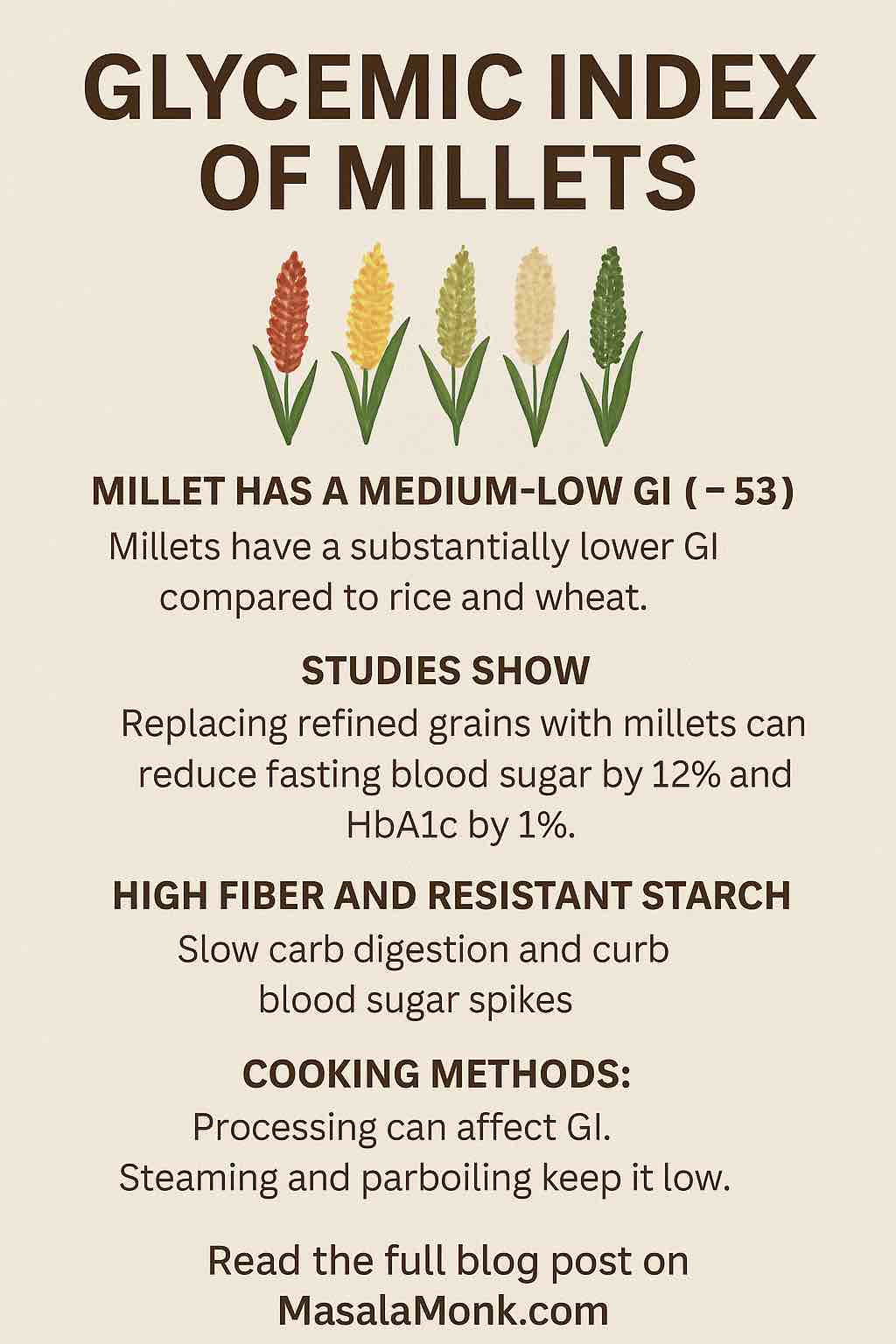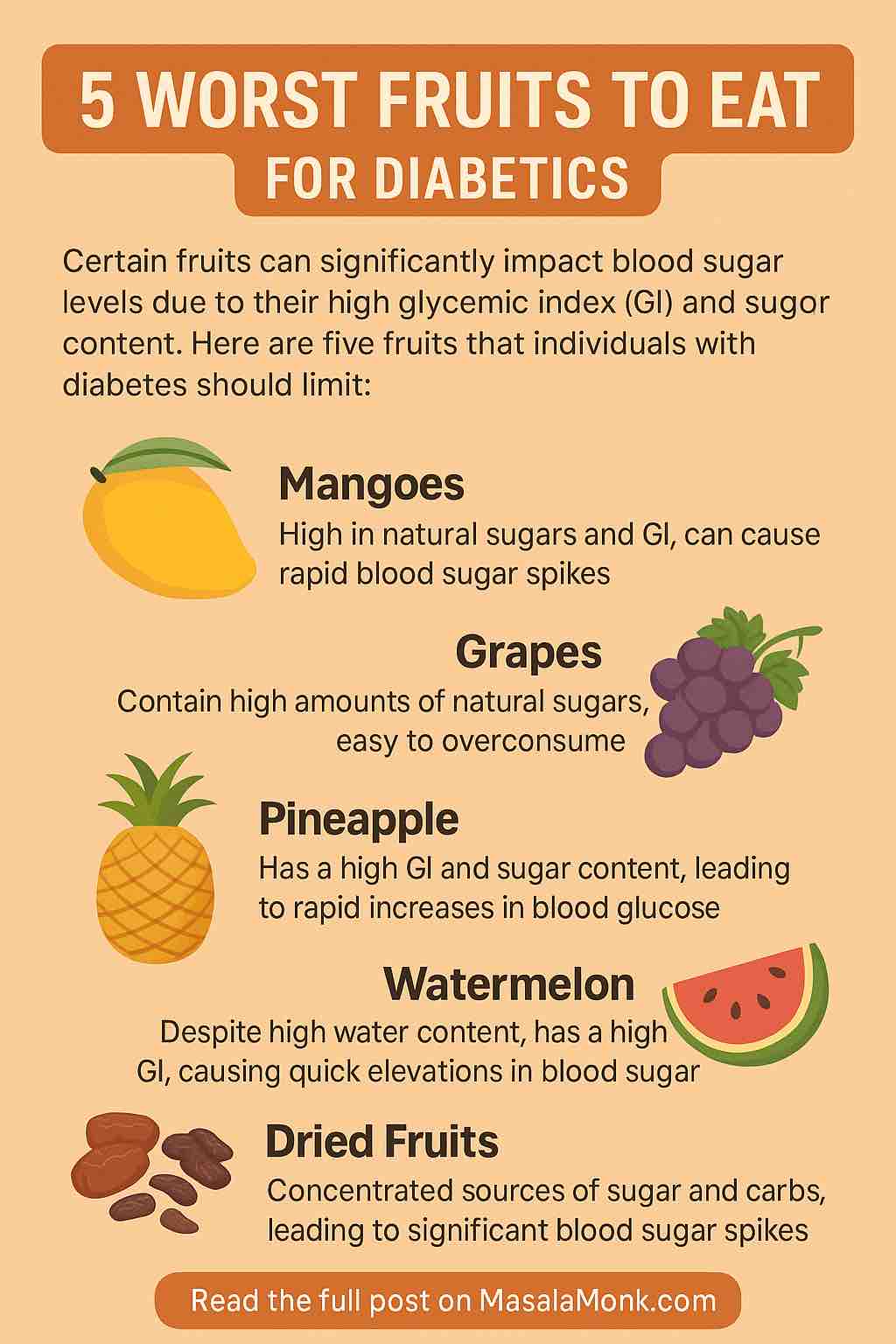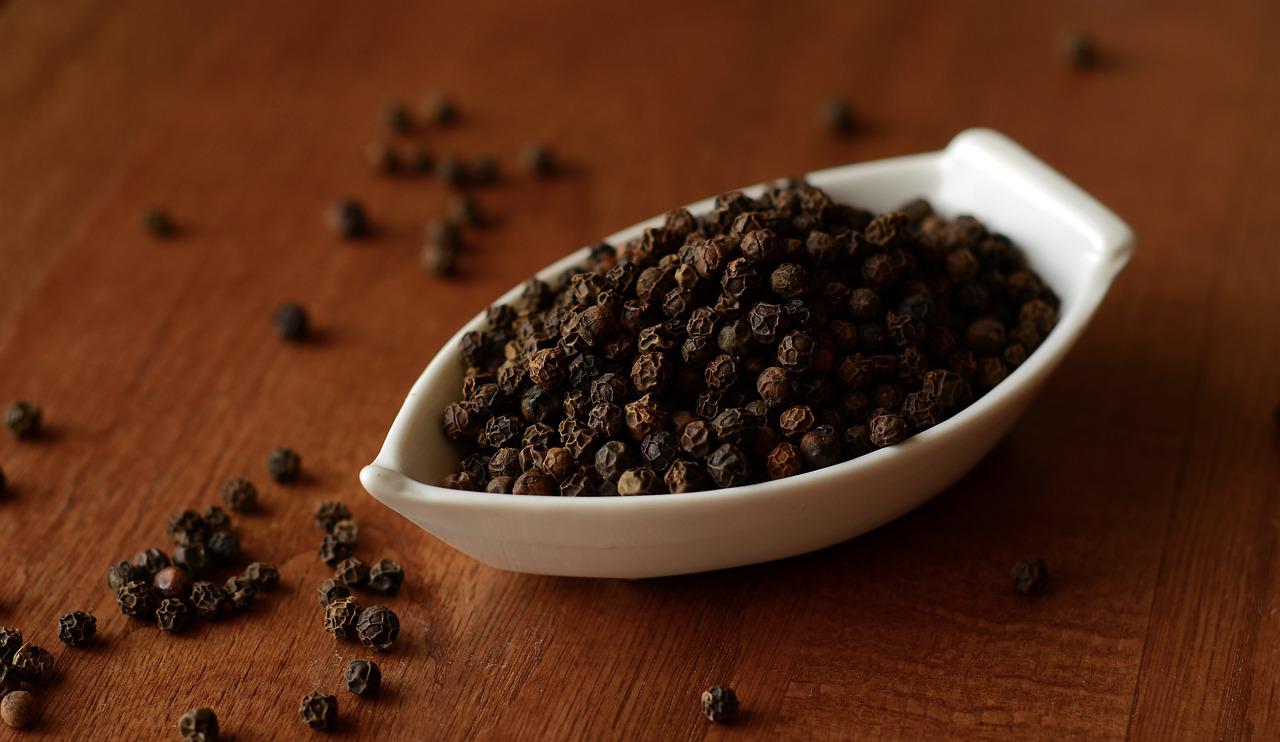
Millets have made a roaring comeback in recent years, gaining popularity for their impressive nutrition profile and eco-friendly cultivation. Among the many health benefits attributed to millets, one that stands out is their impact on blood sugar levels. In this comprehensive guide, we dive deep into the glycemic index (GI) of millets, why it matters, and how they can be a game-changer for people managing diabetes or aiming for better metabolic health.
What is Glycemic Index (GI)?
The Glycemic Index is a numerical scale (0 to 100) that ranks foods based on how quickly they raise blood sugar levels after eating. Foods are categorized as:
- Low GI (55 or less): Slower increase in blood sugar
- Medium GI (56 to 69): Moderate increase
- High GI (70 or more): Rapid spike in blood sugar
Lower GI foods are generally better for people with diabetes and those looking to maintain steady energy levels.
Why Focus on Millets?
Millets are small-seeded grasses that are naturally gluten-free and highly nutritious. They are rich in fiber, protein, essential minerals, and antioxidants. Their carbohydrate quality is superior due to slower digestibility and a lower glycemic response compared to refined grains like rice or wheat.
Modern research has confirmed what traditional wisdom long suggested—millets are excellent for blood sugar regulation.
Glycemic Index of Common Millets
Here’s a GI comparison of various commonly consumed millets:
| Millet | Glycemic Index (GI) | Classification |
|---|---|---|
| Barnyard Millet | 41 | Low GI |
| Foxtail Millet | 50–54 | Low GI |
| Little Millet | 52 | Low GI |
| Kodo Millet | 49 | Low GI |
| Pearl Millet (Bajra) | 55–69 | Medium GI |
| Finger Millet (Ragi) | 65–84 | Medium–High GI |
| Sorghum (Jowar) | 62–70 | Medium–High GI |
These values may vary depending on how the millet is processed and cooked. Whole millets tend to have a lower GI than their floured or puffed counterparts.
Backed by Research: What Science Says
Recent meta-analyses and clinical trials support millets’ role in glycemic control:
- A 2021 systematic review analyzing over 65 studies found the average GI of millets to be 52.7, significantly lower than rice or refined wheat.
- Long-term millet consumption reduced fasting blood glucose by ~12% and post-prandial glucose by ~15%.
- Studies also noted improvements in HbA1c, a marker for long-term blood sugar control.
Additional Benefits
- Rich in dietary fiber: Slows digestion and glucose absorption
- High in polyphenols and antioxidants: Help improve insulin sensitivity
- Contains resistant starch: Ferments in the gut, promoting better gut health and lower inflammation
How Processing Affects GI
Processing has a notable effect on the glycemic index of millets. For instance:
- Whole grain millets retain fiber and structure, resulting in a lower GI
- Milled flour or puffed millets tend to have a higher GI due to faster digestibility
- Parboiling has been shown in recent studies to reduce the GI further by altering starch structure
Cooking methods such as boiling, steaming, and pressure cooking with minimal water can also help retain a lower GI profile.
Incorporating Millets in Your Diet
Here are some ways to enjoy millets without spiking your blood sugar:
- Use whole millets like foxtail or barnyard in place of rice
- Mix millet flours with high-fiber flours like besan or soy flour for chapatis
- Combine millets with legumes to lower the overall glycemic load of a meal
- Add healthy fats and proteins (e.g., nuts, seeds, paneer) to balance glycemic impact
Who Can Benefit Most?
Millets are ideal for:
- People with Type 2 Diabetes: Consistent use has shown improved blood glucose and insulin levels
- Pre-diabetics: Can help delay or prevent progression to diabetes
- Weight Watchers: Low GI helps control hunger and energy levels
- Fitness Enthusiasts: Great for sustained energy during workouts
Conclusion: A Smart Carb Choice
The resurgence of millets is not just a health trend—it’s a nutritional renaissance. With their low to moderate glycemic index, high fiber content, and myriad health benefits, millets stand out as an excellent grain choice for anyone looking to improve or maintain healthy blood sugar levels.
Choosing millets means opting for a smarter carbohydrate source that nourishes your body without sending your blood sugar on a roller coaster. When prepared right and paired with balanced meals, millets can be a staple in any health-conscious diet.
Have questions about how to include millets in your specific diet plan? Let us know in the comments or reach out for a personalized guide.
🔍 FAQs
1. What makes millets a good option for people with diabetes?
Millets have a low to medium glycemic index, high fiber, and slow-digesting carbs, which help prevent blood sugar spikes and improve insulin sensitivity.
2. Which millet has the lowest glycemic index?
Barnyard millet has one of the lowest GIs, around 41, making it an excellent choice for blood sugar control.
3. Are all millets low in GI?
Not all. While many millets like foxtail and little millet are low GI, others like ragi (finger millet) can range higher, especially when processed.
4. Does cooking method affect the glycemic index of millets?
Yes. Whole grain millets cooked with minimal water (steamed, boiled) retain a lower GI. Overcooking or milling into flour raises the GI.
5. Can I eat millet every day?
Yes, when balanced with other food groups. Daily consumption of millets can improve blood sugar control, especially when replacing refined grains.
6. How do millets compare to rice or wheat in terms of GI?
Millets typically have a lower GI (around 50–55) than white rice (~73) or refined wheat (~74), making them a healthier alternative.
7. Is millet flour as good as whole millet for blood sugar control?
Whole millets are better. Millet flours tend to digest faster, raising their GI. Pairing with fiber-rich or protein-rich foods can help balance this.
8. Are millets safe for pre-diabetics?
Yes. Studies show millets can help reduce blood sugar and HbA1c levels in pre-diabetics, potentially delaying diabetes onset.
9. What’s the best way to include millets in a diabetic diet?
Use whole millets in porridge, khichdi, or salads. Pair with legumes, vegetables, and healthy fats for a balanced, low-GI meal.
10. Are processed millet products like flakes or puffs good for blood sugar?
Processed forms tend to have higher GI. Choose minimally processed or whole grain versions whenever possible.













